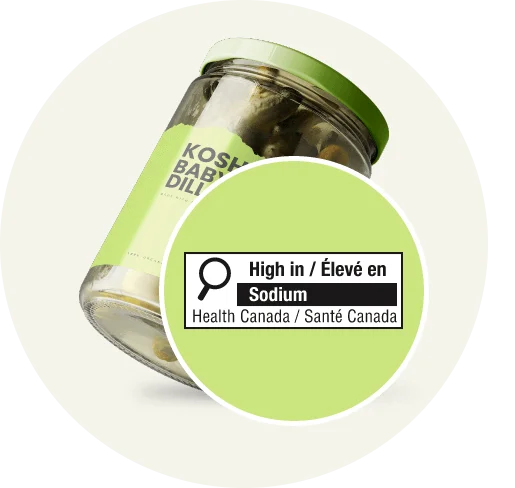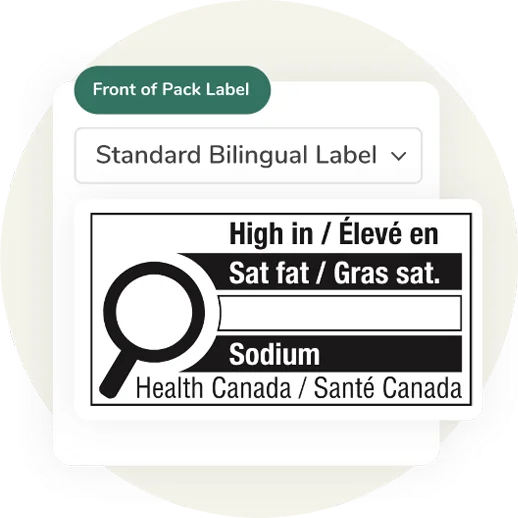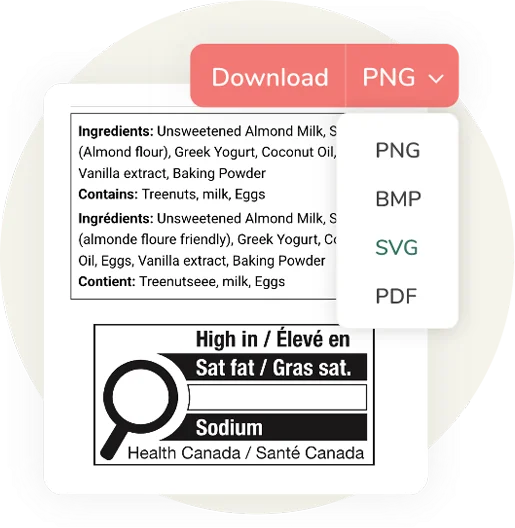What is required on food labels in Canada?
Canadian food labels must meet specific requirements set out by the Canadian Food Inspection Agency (CFIA). Mandatory elements include:
- The common name of the food
- Ingredient list (including allergens)
- Nutrition facts (including fat, calories, sugars, and other nutritional information)
- Net quantity
- Name and address of the manufacturer or distributor
- Bilingual requirements require labels to be presented in both English and French
Labels must also follow relevant formatting rules, and be compliant with any relevant health or nutrient content claims.
Read more about CFIA food labeling requirements or book a demo to see how our tool can help you stay compliant.
Does Canada require country-of-origin labeling?
Yes. Country-of-origin labeling is required in certain cases, such as for imported prepackaged products, specific meats, and fresh fruits and vegetables.
The CFIA enforces strict guidelines on when and how this information must be displayed, especially when the origin may influence consumer perception or safety.
While not required for all products, proper declaration is crucial for transparency and regulatory compliance.
Read more about CFIA labeling or book a demo to ensure your product meets CFIA standards.
What FOP formats can be generated with the tool?
Food Label Maker’s tool provides four main Front of Package label formats. These include:
- Standard bilingual
- Standard english only
- Linear bilingual
- Standard vertical
Book a demo or sign up for our tool to see these formats in action.
Does the tool support CFIA reference amounts for FOP threshold calculations?
Yes, Food Label Maker’s software includes a built-in tool where you can choose the reference amount based on the category of their product. Our software automatically updates information based on CFIA’s current guidelines, allowing you to have peace of mind in knowing that your information is compliant and up-to-date.
If you are unsure, you are also welcome to consult one of our in-house nutritionists who can review your calculations and provide expert advice.
What are the threshold regulations behind the FOP?
Canada’s FOP labeling regulations require a “high in” symbol when a product exceeds specified thresholds for saturated fat, sodium (salt), or sugars.
Thresholds vary depending on the food category and serving size, but the FOP symbol is mandatory for products and prepackaged foods sold in Canada that exceed these threshold amounts.
Baked goods, sugary drinks and processed snacks are a few examples of food products that would need to display this symbol and exemptions apply to certain foods such as dairy or single-ingredient items.
Learn more about threshold regulations or book a demo to see how our tool applies these rules.












